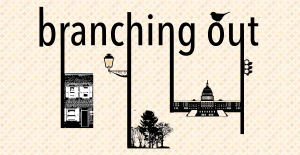Swipe. “Next!” This is a familiar refrain heard by every Georgetown student in the Leo O’Donovan Dining Hall on any given day. Swipe.“Next!” They take back their GOCards and enter the downstairs eating area. Swipe.“Next!”
While many on campus are able to easily hand over their GOCard to Suru, there are others facing food insecurity who have to think twice. Over the past few months, students have taken the lead on a variety of projects at Georgetown that aim to tackle food insecurity, and they are now looking to expand these programs into the future.
The term “food insecurity” refers to persistent difficulties in obtaining enough food for a healthy life, including cost and accessibility barriers. Food insecurity affects more than just the stomach, according to Yuki Kato, a Georgetown professor of sociology. “Food is fundamentally cultural, social, and political, and being ‘food insecure’ has ramifications in all of these realms,” Kato wrote in an email to the Voice. “Not having enough or nutritiously rich food could affect their academic performance, personal relationships, and have long-term health consequences.”
A 2016 GUSA survey found that 54 percent of the 351 students polled had experienced food insecurity during their time at Georgetown. Two-thirds of those food insecure students were on financial aid, which means at least part of their meal plan was covered by the university.
The university has worked with various campus groups, including GUSA and Aramark, Georgetown’s food services contractor, to understand and address the issue. “The University’s Council on Student Equity and Access has undertaken a more thorough study of options to address issues of food insecurity in our community,” a university spokesperson wrote in an email to the Voice.
However, students such as Izzy Ortiz (MSB ’20) have started to take charge on finding solutions across campus. For Ortiz, this took the form of a pilot program where students could donate meal swipes which became vouchers that other students could later redeem.
On Feb. 14., Valentine’s Day, Ortiz partnered with Georgetown’s Interhall Council and the nonprofit organization Swipe Out Hunger to lead a one-day campaign where students could donate a meal swipe.
“It was a good day to do it because it was showing love, community, and support,” Ortiz said. “Share some love and donate a meal to your fellow Hoya.”
GOCard systems at Leo’s, Royal Jacket, Crop Chop, and Einstein’s Bagels were all programmed to accept one extra swipe if the student requested to donate it. By the end of the day, 538 meals had been donated. “It was a huge success,” Ortiz said. “We were very happy with it.”
Ortiz laid the groundwork for this project in July, when she realized that to make real change, she would first need to look off campus for help. So she partnered with Swipe Out Hunger, a program that works with universities across the country to end student hunger, to create a plan.
When Ortiz came back to campus, she realized that the process of creating a club on campus would be difficult, so she looked for another partner and found one in Interhall Council, a student organization that seeks to improve residential life on campus.
Alandro Valdez (COL ’21), Interhall Council vice president of advocacy, said that Interhall was happy to help in any way it could. “We invited her to partner with us to help set up the meal swipe program so we could provide her and the program with an institutional place at Georgetown and whatever monetary support was needed,” Valdez said.
Ortiz and Interhall worked for the rest of the fall semester to make the meal swipe donation program a reality. They collaborated with Auxiliary Business Services and Aramark to figure out the necessary technology. Valdez noted that Swipe Out Hunger’s previous partnerships with other Aramark-affiliate colleges provided a useful model for the initiative. “We didn’t have to start from scratch,” he said. “We had a template to go off of.”
This led to the Valentine’s Day donation program, which exceeded its original goal of 500 total donations. However, for Ortiz, these donations are just the first step in a long process to oppose food insecurity. “This was obviously a pilot program,” she said. “We want to see how it goes.”
Another key partner for Ortiz has been the Hoya Hub, a free pantry stocked with non-perishable food items and other goods located on the fourth floor of Leavey. The Hub opened in October 2018, and this service is available to any student, regardless of demonstrated need, as a resource to combat food insecurity.
The Hoya Hub worked alongside Ortiz and Swipe Out Hunger by offering vouchers, advertising, and tabling. “We saw a ton of crossover between Swipe Out Hunger’s mission and ours,” Caroline Barnes (COL ’19), chair and co-founder of Hoya Hub, wrote in a statement to the Voice. “A large part of our work as the Hoya Hub is being an ‘umbrella’ group to support other initiatives and students who are also trying to tackle this wicked problem that is food insecurity.”
The Hoya Hub has proven to be useful for many in the university community, according to Erika Cohen-Derr, assistant vice president of student affairs. She wrote in an email to the Voice that a 200-person survey of people who have used the Hoya Hub showed that they were 70 percent undergraduate students, 25 percent graduate students, and 5 percent other members of the university community.
Its services will also soon be expanding, according to Julianne Licamele (COL ’21), co-chair of the Hoya Hub. “The Hoya Hub itself is currently transitioning from a group of volunteers that started the food pantry into a CSJ organization,” Licamele wrote in a statement to the Voice. “We will be able to work on issues beyond the food pantry itself. We hope to be engaged with advocacy work, partnerships with other organizations on campus, and more programs that address food insecurity.”
Other options on campus to combat food insecurity include events such as the recent Stock the Pantry food drive (run by the Hoya Hub) and grocery stipends provided to Georgetown Scholars Program students during breaks, when Leo’s is closed.
These programs are only part of the future of combating food insecurity. Ortiz also hopes to spark a conversation about food insecurity. “It is really stigmatized and people don’t want to talk about it,” Ortiz said. She said people who use the donated meal swipes and the Hoya Hub are kept anonymous. “We never want anyone to feel uncomfortable.”
In the future, Ortiz sees an opportunity to expand this operation into the community. “We can bring [food from campus] into the community or any homeless population that needs it,” Ortiz said. “That’s just part of the next steps we need to take and learning from the process.”
For now, Ortiz is working to encourage students to come pick up vouchers for the donated meal swipes from the Women’s Center or the Hoya Hub. The swipes will expire in May. Regardless, she is already looking to the bright future of the program. “There is a lot of talk about what our next steps are,” Ortiz said. “I think it is only going to go up from here.”






[…] Swiping Out Food Insecurity, One Meal At A Time […]